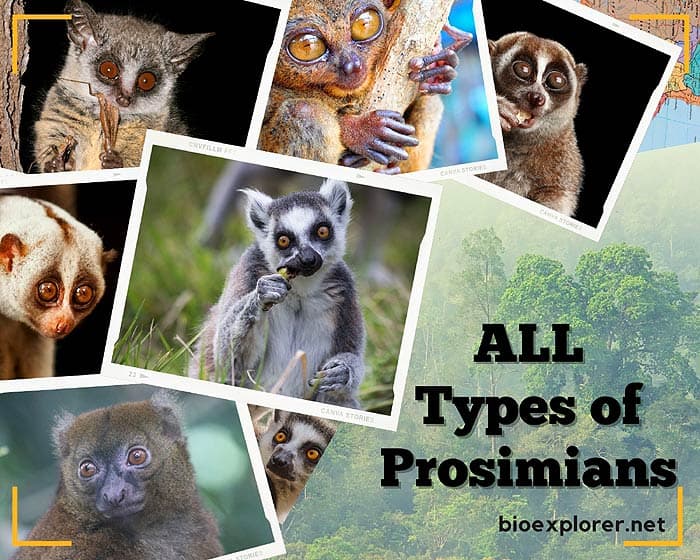
Types of Prosimians: Prosimians are a grouping of primates that is currently made up of the species (both living and extinct) of two main taxonomic categories: the Strepsirrhini suborder (which includes galagos, lemurs, loris, and more) and the Tarsiiformes infraorder (which is made up of tarsiers).
Prosimians’ counterpart is Simians, a group that includes all other primate species (e.g., monkeys, apes, humans). The term “Prosimian” means “pre-monkey” in Latin, which refers to the fact that the species of this grouping are generally more primitive than the Simians.
It is important to note that traditionally, the Prosimians and Simians were separated into two suborders within the Primates order: Prosimian species made up the Prosimii suborder, while Simian species made up the Anthropoidea suborder.
However, upon further research, biologists found that tarsiers, considered Prosimians, are more closely related to Simians; many taxonomists believed that the taxonomic classification of the two suborders had to be revamped entirely to account for this discovery.
As a result, under the more modern classification, tarsiers are put under the Haplorhini suborder (as are Simians), while the other Prosimians are put under the Strepsirrhini suborder.
Due to these taxonomic changes, the term “Prosimian” is not in circulation as often as before; regardless, it can still be used to describe all the “non-Simian” primates collectively.
Table of Contents

